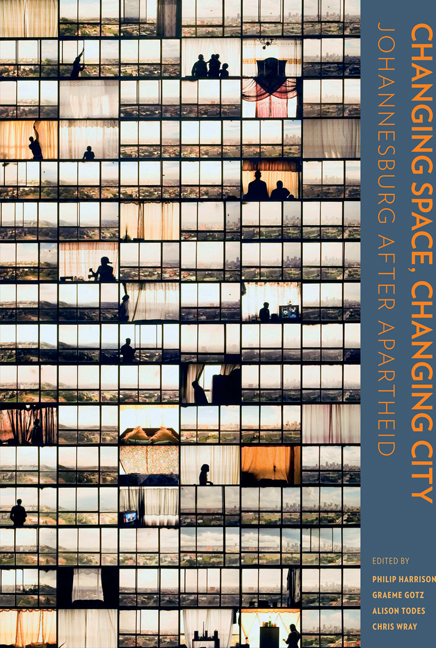Book contents
- Frontmatter
- Contents
- Preface
- Cartography
- 1 Materialities, subjectivities and spatial transformation in Johannesburg
- Section A The macro trends
- 2 The ‘thin oil of urbanisation’? Spatial change in Johannesburg and the Gauteng city-region
- 3 Poverty and inequality in the Gauteng city-region
- 4 The impact of policy and strategic spatial planning
- 5 Tracking changes in the urban built environment: An emerging perspective from the City of Johannesburg
- 6 Johannesburg's urban space economy
- 7 Changes in the natural landscape
- 8 Informal settlements
- 9 Public housing in Johannesburg
- 10 Transport in the shaping of space
- 11 Gated communities and spatial transformation in Greater Johannesburg
- Section B Area-based transformations
- Section C Spatial identities
- Contributors
- Photographic credits
- Acronyms
- List of plates
- List of figures
- List of tables
- Index
10 - Transport in the shaping of space
from Section A - The macro trends
Published online by Cambridge University Press: 20 April 2018
- Frontmatter
- Contents
- Preface
- Cartography
- 1 Materialities, subjectivities and spatial transformation in Johannesburg
- Section A The macro trends
- 2 The ‘thin oil of urbanisation’? Spatial change in Johannesburg and the Gauteng city-region
- 3 Poverty and inequality in the Gauteng city-region
- 4 The impact of policy and strategic spatial planning
- 5 Tracking changes in the urban built environment: An emerging perspective from the City of Johannesburg
- 6 Johannesburg's urban space economy
- 7 Changes in the natural landscape
- 8 Informal settlements
- 9 Public housing in Johannesburg
- 10 Transport in the shaping of space
- 11 Gated communities and spatial transformation in Greater Johannesburg
- Section B Area-based transformations
- Section C Spatial identities
- Contributors
- Photographic credits
- Acronyms
- List of plates
- List of figures
- List of tables
- Index
Summary
In 2002, the City of Johannesburg residents who drove to work spent about 27 million hours commuting, while those who used public transport spent about 82 million hours. Collectively, travel time to work translated into 62 000 work days per year. This is equivalent to 62 000 eight-hour daily jobs in a city that at the time had just over 520 000 employed residents (Gautrans 2002).
The amount of time people spend travelling to work in the city, and travelling generally, is significant. Travel times have also been on the increase since the Gautrans survey that provided the 2002 figures. Considering that travel time is an overhead cost in terms of both time and money, the fundamental question that the city has to answer is: What can be done to reduce this overhead cost? Considering that any spatial change introduced in the city serves to either increase or reduce travel costs, careful consideration needs to be given to where, how and what these changes should be. In a globally significant city such as Johannesburg, increased transport costs also affect the economic competitiveness of South Africa.
In this chapter we use historical information and data to investigate the effectiveness of transport service delivery in respect of managing transport costs in the city. Some of the most significant transport interventions in the last decade (e.g. the Rea Vaya Bus Rapid Transit [BRT] and Gautrain) are also reviewed. The chapter should be of interest to civil society activists, city administrators and academics. From a civil society perspective, awareness of the findings may encourage improved participation through critical questioning of the technocrat-led domain of transport planning. City administrators will appreciate the importance of a transport service delivery agenda that transcends the limited terms of political office bearers. Lastly, from an academic perspective, the chapter provides some quantitative baseline information that can be used in the systematic identification of additional research questions. While the geographical context in the chapter is limited to Johannesburg, most of the findings are equally relevant to any city in developing or mature economies.
Transport planning in cities
As cities continue to experience population growth, the need for mobility also increases. This in turn requires improved use of existing transport infrastructure and services, as well as increased capacity of the infrastructure and services.
- Type
- Chapter
- Information
- Changing Space, Changing CityJohannesburg after apartheid, pp. 194 - 214Publisher: Wits University PressPrint publication year: 2014

